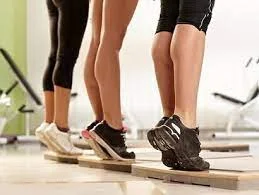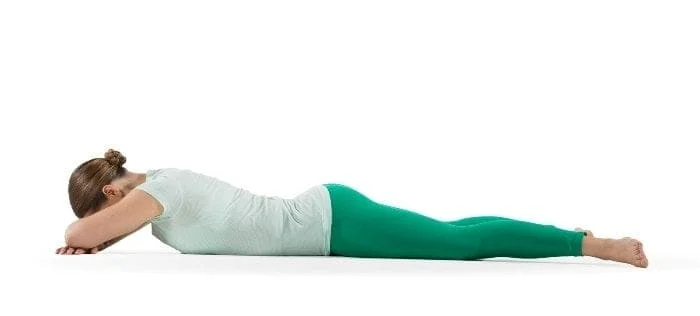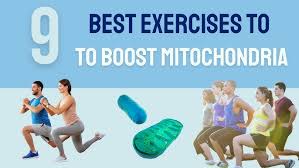Calf muscle exercises
Table of Contents
Introduction
- Calf muscle exercise includes different types of exercises such as stretching exercises and strengthening exercises. strengthening exercise helps to improve Joint flexibility, Increased muscle mass, Stronger bones, Weight control, and Balance. stretching exercise Improves your performance in physical activities, Decreases your risk of injuries, Helps your joints move through their full range of motion, and Increases muscle blood flow. Enable your muscles to work most effectively, Improve your ability to do daily activities.
- The gastrocnemius muscle is located with the soleus in the leg’s posterior (back) compartment. The lateral head originates from the lateral condyle of the femur, while the medial head originates from the medial condyle of the femur. Its other end forms a common tendon with the soleus muscle; this tendon is known as the calcaneal tendon or Achilles tendon and inserts onto the posterior surface of the calcaneus, or heel bone.
- It is considered a superficial muscle as it is located directly under the skin, and its shape may often be visualized through the skin. The soleus muscle is a wide flat leg muscle found on the posterior leg. It runs from just below the knee to the heel and lays immediately deep into the gastrocnemius. The gastrocnemius, the soleus, and the plantaris muscle make the group of superficial posterior compartment calf muscles.
- Calf muscle muscle exercise includes two types of exercise
- Calf muscle Stretching exercise
- Calf muscle Strengthening exercise
Strengthening Exercises
Health benefits of calf strengthening exercise
- The strong calf may improve your performance,
- People who suffered knee pain or plantar fasciitis can improve their symptoms by strengthening their calves as well.
- Your entire lower body performance depends on the strength of your calf muscles.
- Runners, if you want to improve your speed then do calves raises.
- Yes, calf raises mean a big no to injuries.
- Stronger and more flexible calves muscles give you better balance and stability.
- Helps to decrease the risk of ankle and foot injuries.
- Better agility when jumping and running.
- More explosive, rapid movement Great exercise for runners Calves exercise can also detect an older person’s ability to do activities of daily living
- It helps to reduce stress on an Achilles tendon This will give your lower leg to defined appearance.
- This exercise helps to stabilize your foot and ankle.
- Your whole lower body performance depends on the calves’ muscle strength.
Seated Calf Raise
- For this exercise, you have to access the calf raise machine Another option would be holding something heavy on your lap, but this will not provide enough load to work the muscles properly.
- Since the knees are flexed, the gastrocnemius is not working.
- The seated calf raises mostly target the soleus muscle.
- For this exercise, you have to Sit on a machine with your upper thighs placed under the pad.
- The pad should rest just above your knees. your ball of feet should be positioned on the footplate.
- Now lower your heels as much as possible. slowly elevate your heels while pushing your toes into the pad.
- You have to raise your heels until you feel a stretch in your calf and hold for 2 to 3 seconds before lowering down to the initial position.
- Do for 15 to 20 repetitions.
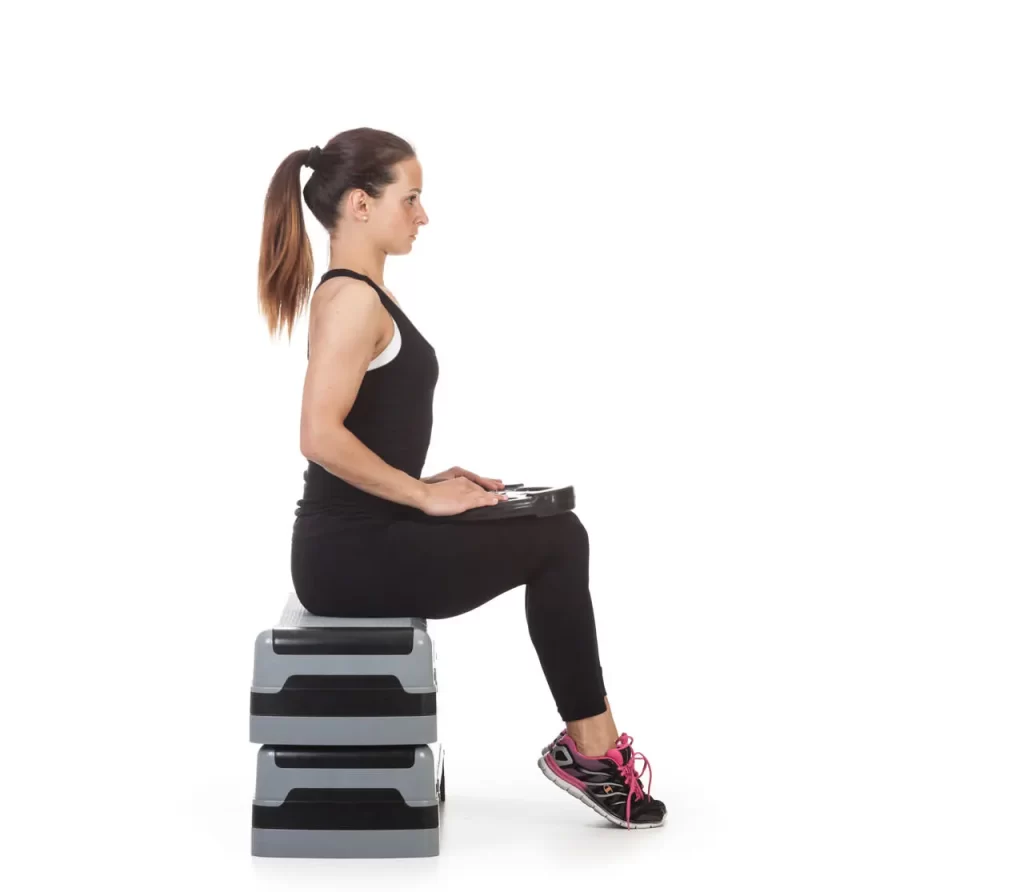
Standing calf raise
- Positioning is Standing with your feet hip-width apart, toes pointing forwards
- Push through the balls of your feet, lifting your heels as high as possible for you
- Pause for short period at the top squeezing your calf muscles
- Slowly lower down to starting position
- Repeat for desired reps
- calf exercises gym
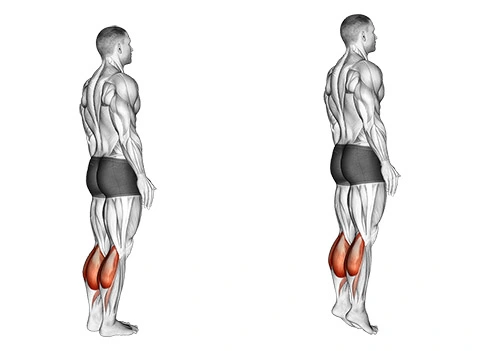
Elevated standing calf raise
- Positioning is Standing with your feet hip-width apart on the edge of a platform or elevated surface
- Push through the balls of your feet, lifting your heels as high as possible for you
- Pause short period at the top squeezing your calf muscles
- Slowly lower down until your calves are stretched out completely
- Repeat for desired reps
- calf exercises for runners
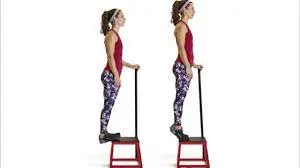
Isometric calf raise
- Positioning is Standing with your feet hip-width apart
- Press through the balls of your feet, lifting your heels as high as you can off the floor
- Squeeze at the top for 5 seconds
- Slowly return to starting position
- Repeat for desired reps
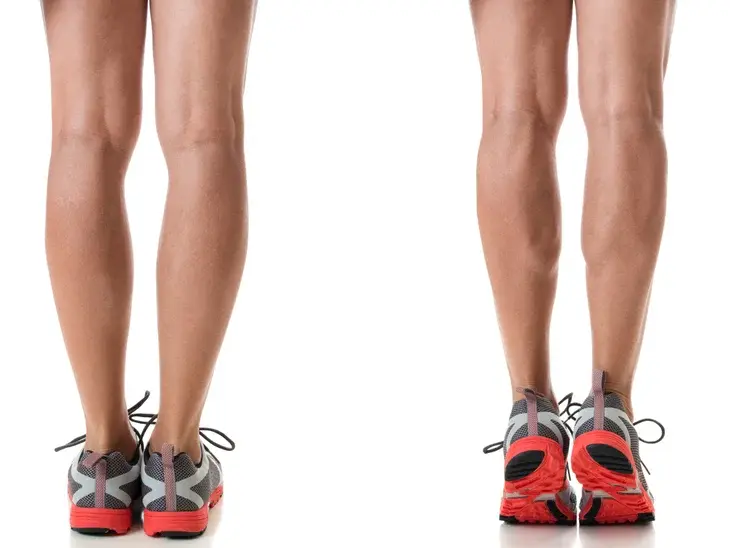
Single leg calf raise
- Positioning is Standing on one foot, toes pointing forward
- Push through the balls of your foot, lifting your heel as high as possible for you
- Pause short period at the top squeezing your calf muscles
- Slowly lower down to starting position
- Repeat for desired reps
- Switch sides
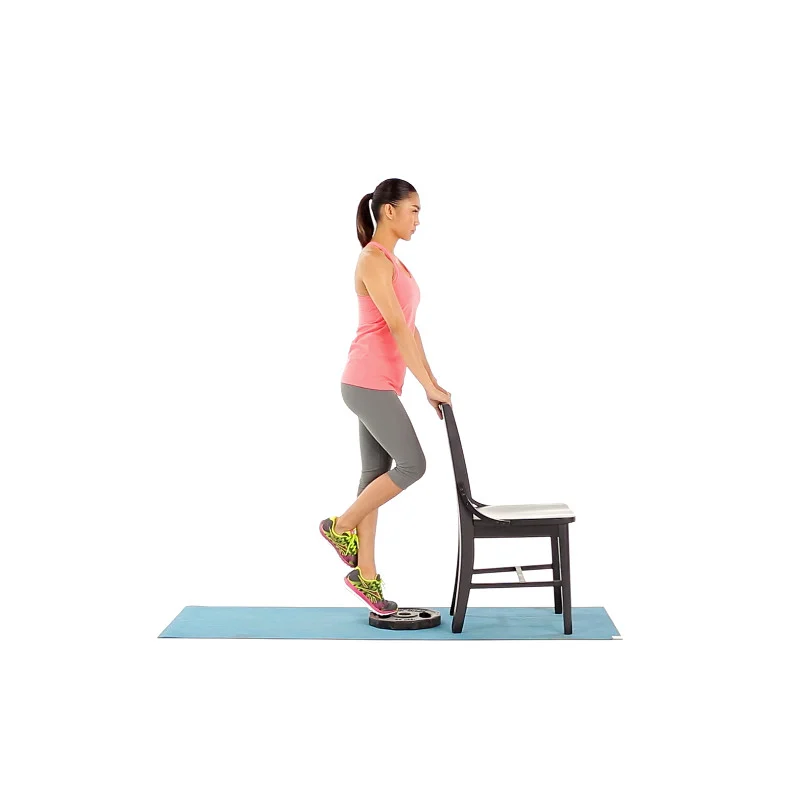
Jumping jacks
- Positioning is standing with feet hip-width apart with hands at your sides
- Jump up and spread your legs out to the sides and swing your arms over the head
- Return to starting position
- Repeat for desired reps
- exercises for calves at home
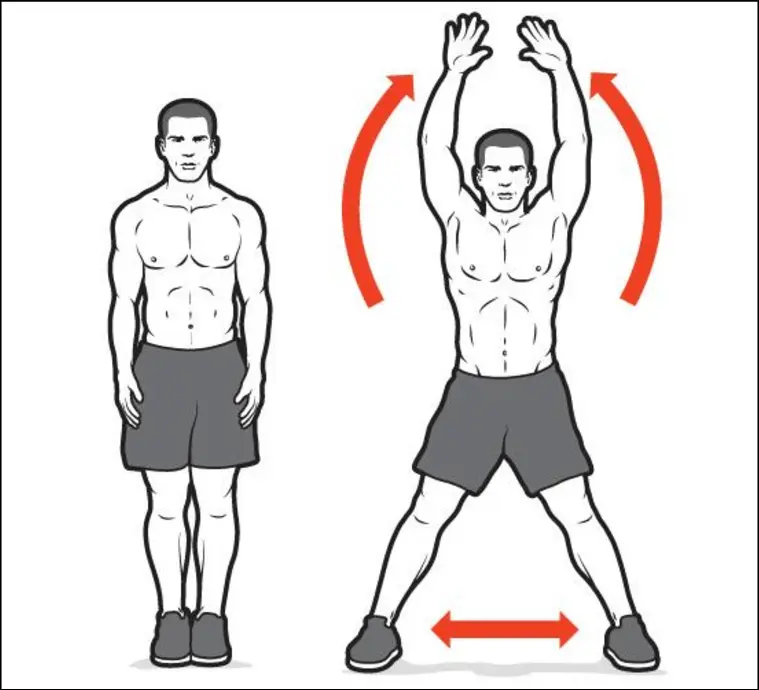
Hole calf raise
- the position is standing on a platform or elevated surface with your toes pointing outwards
- Lower down into the bottom part of a squatting position
- Perform a calf raise by pushing through the balls of your feet as high as possible
- Slowly return to starting position
- Repeat for desired reps
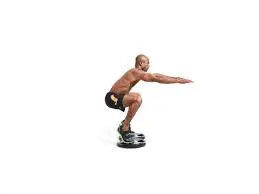
Seal jack
- The position is standing with feet together with your arms stretched out in front of you
- Jump up and spread your legs and arms to the sides
- Land softly with your feet spread apart and arms out to the sides
- Jump up again and return to starting position; this is one repetition
- Repeat for desired reps
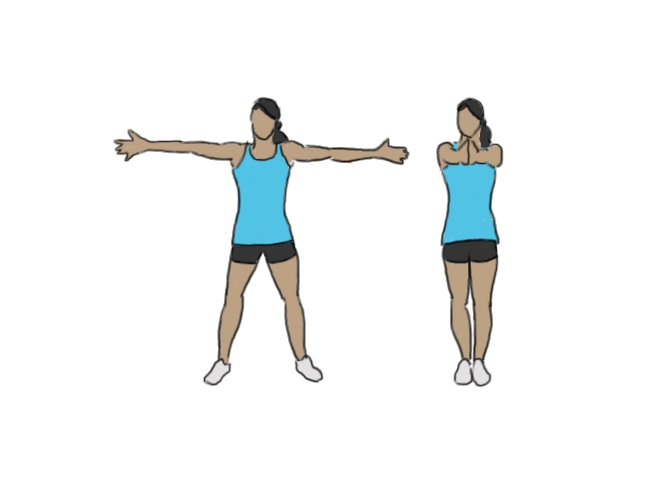
High knees
- The position is Standing with feet hip-width apart
- Raise your left leg bringing your knee up as high as you can do
- Lower left leg then bring right knee up as high as you can do
- Alternate knees, continuing to run in place
- Repeat for desired time
- calf exercises to jump higher
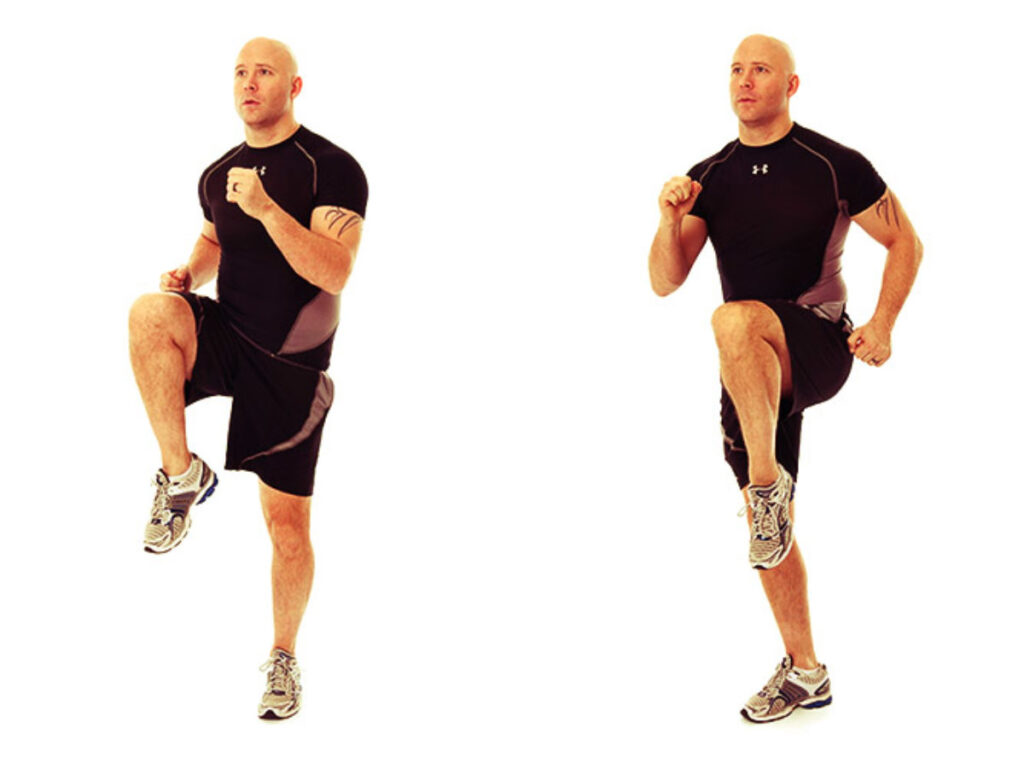
Butt kicks
- The position is Standing with your feet hip-width apart
- Bring your right heel up to your buttock
- Lower your right leg back to the ground then repeat with your left leg
- Alternate between legs for desired time
- calf exercises to run faster
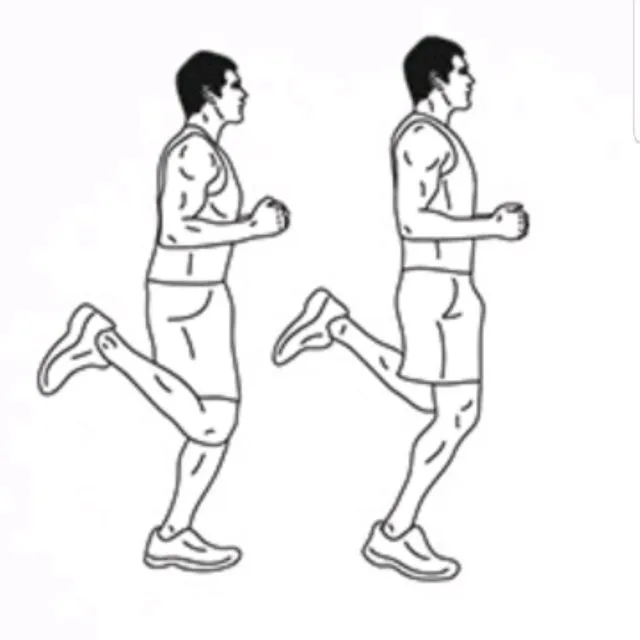
Raised heel squat
- The position is Standing with your feet shoulder-width apart
- Rise up onto the balls of the feet
- Perform a squat, at the bottom of the squat lower your heels to the ground
- Push through the balls of your feet back to the starting position
- Repeat for desired reps
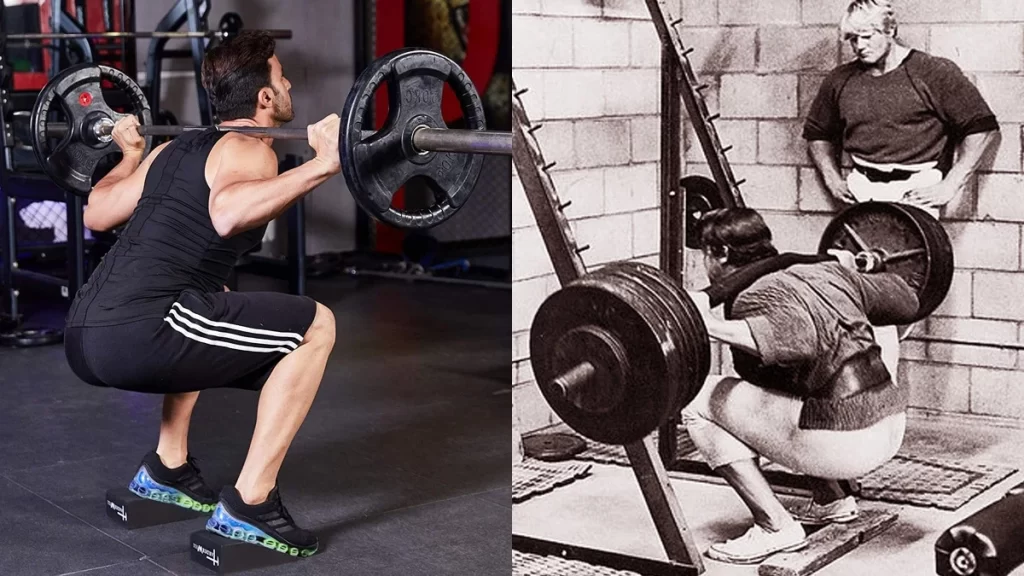
Jump squat
- The position is standing with feet shoulder-width apart
- Lower down into a squat position
- Push off through the balls of your feet, jumping as high as you can jump, and then Softly land on the balls of your feet
- Repeat for desired reps
- calf exercises without equipment
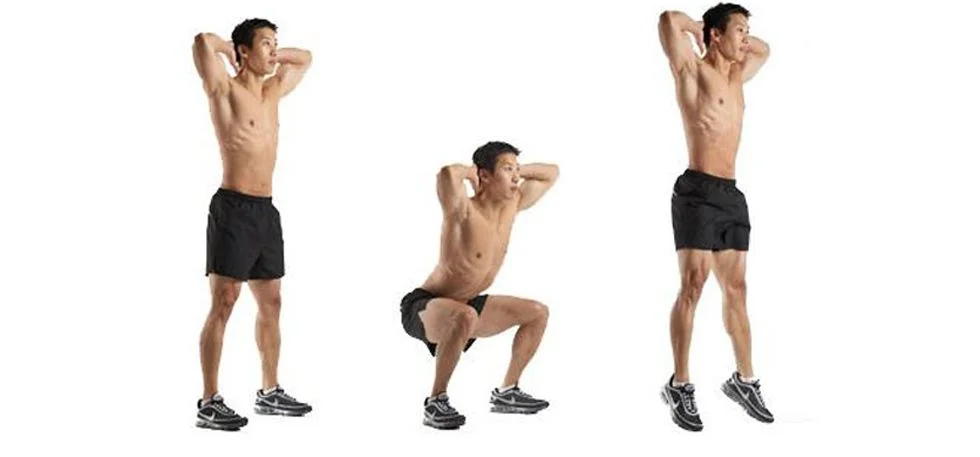
Toe jump
- The position is standing with feet hip-width apart
- On the balls of the feet rise up
- Hop up and down quickly
- Repeat for desired reps
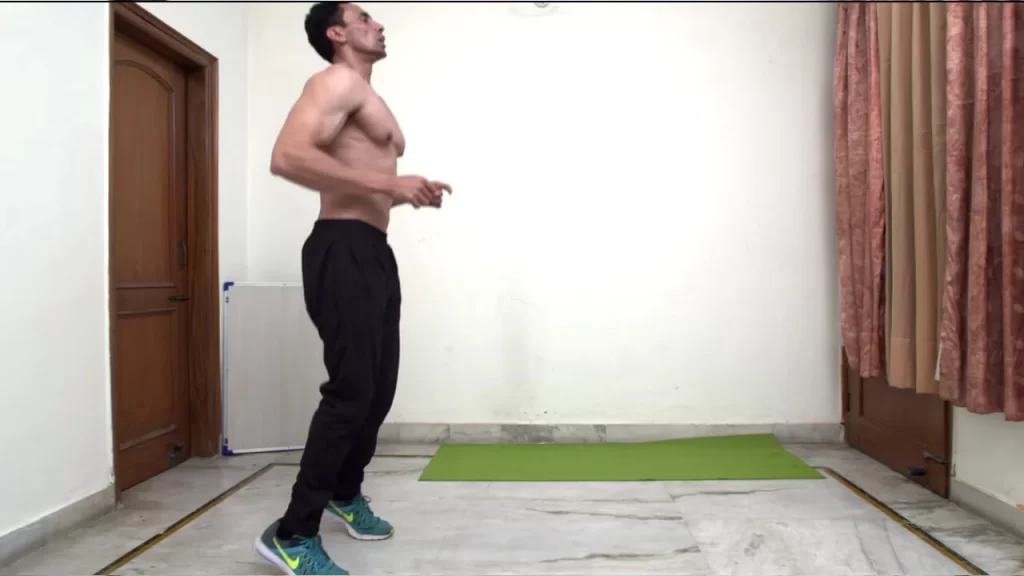
Step up hop
- The position is standing with feet hip-width apart
- Step up onto the shin-level platform with your right leg
- Push up off the balls of your right foot into a hop
- Land softly on the balls of the foot then step back down to the ground level
- Switch sides
- Repeat for desired reps
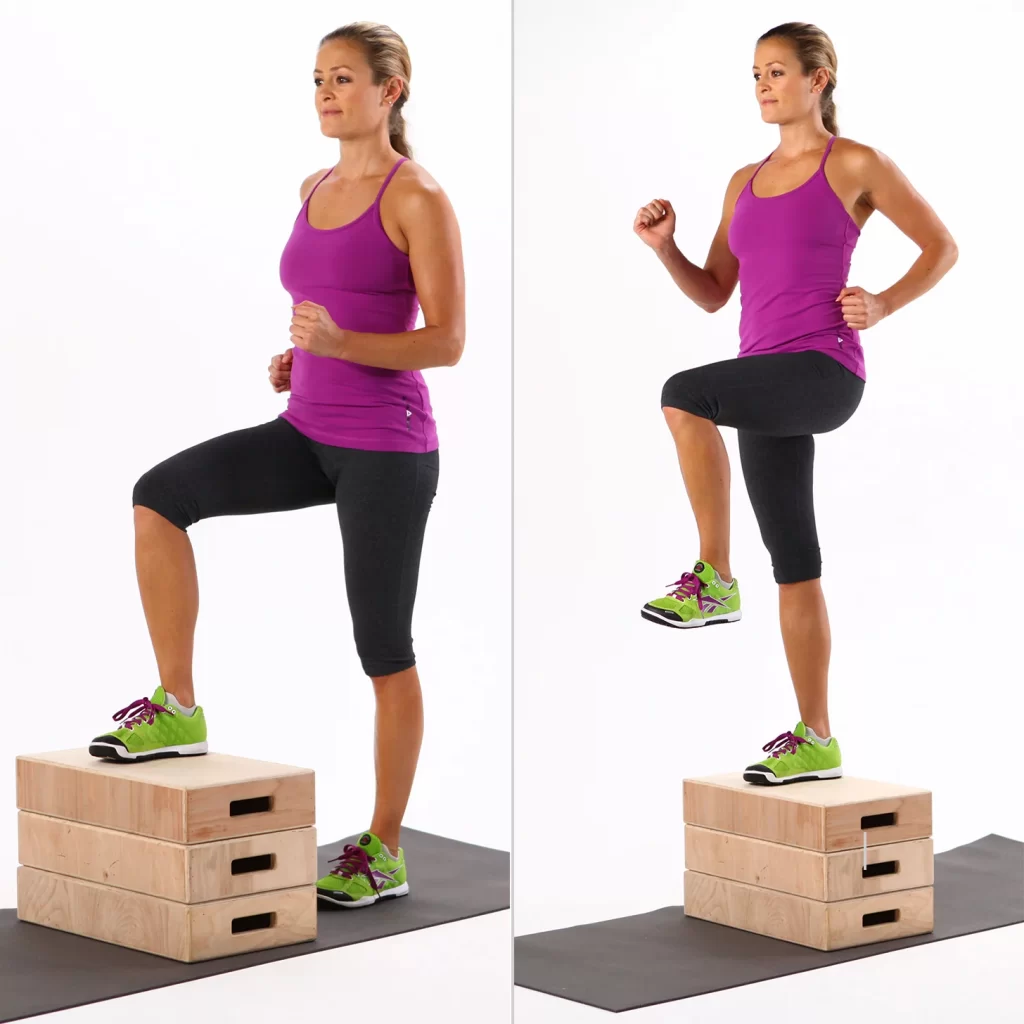
Bosu ball squat
- The position is standing on the Bosu ball with feet hip-width apart
- Slowly lower down into a squat
- Push up through your heels to the starting position
- Repeat for desired reps
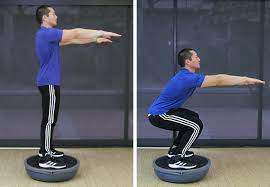
Stretching exercise
Benefits of calf stretching
- There are some advantages/benefits you can achieve by doing calf stretch :
- Activate the calf muscles. Your calf muscles do many everyday functions, including walking and standing, so they can easily become fatigued or stiff.
- Improve your short-term range of motion. Improve range of motion. Such as ankle plantar flexion.
- Improve long-term flexibility.
- Decrease muscle soreness.
- It also helps in locking your knee.
- Improve circulation in your leg.
- Reduce the frequency of leg cramps.
- Avoid Achilles Tendinitis
- Avoid Shin Splints
- Avoid Plantar Fasciitis
What are the types of calf stretch?
There are so many techniques used for a calf stretch :
- Calf muscle stretch with or without a wall
- Heel cord stretch with bent knee
- Towel Stretch
- Calf raises
- Dorsiflexion Stretch
- Downward Facing Dog
- Heel Drop Stretch
- Lunging Calf Stretch
- Standing Bent-Over Calf Stretch
- Runner’s Stretch
- Seated Calf Stretch
- Calf Stretches on a step
- Inner Calf Stretch
- Isometric Calf Raise
- Stretching the calves with a folding chair
Calf muscle stretch with or without a wall
There are two techniques for stretching the calf muscles. One needs a wall, and the other does not.
- With a wall
- How to stretch a calf: Stand around an arm’s length in front of a wall.
- Place the left leg in front of the right. extend both arms to the wall.
- Press the back (right) heel into the ground and extend the back leg while keeping the front leg flexed.
- Hold this calf stretch for 15–20 seconds.
- Perform the stretch on the opposite side.
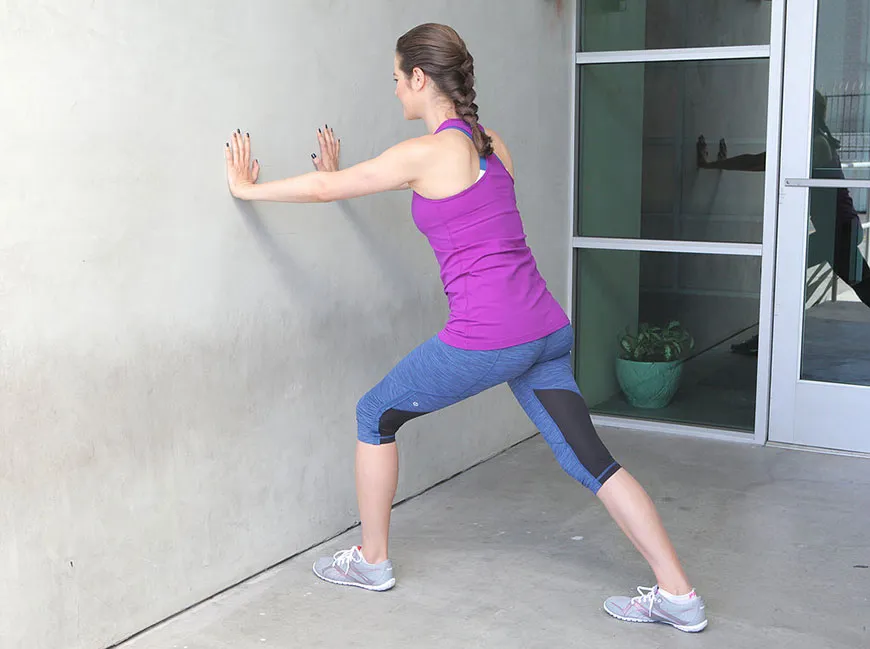
- Without a wall
- How to stretch a calf: Place the left leg in front of the right leg.
- Transfer the body’s weight onto the front (left) leg, while keeping the back heel pressed into the ground.
- Hold this calf stretch for 10 –20 seconds.
- Perform the stretch on the opposite side.
- Prevent arching the back when performing this stretch.
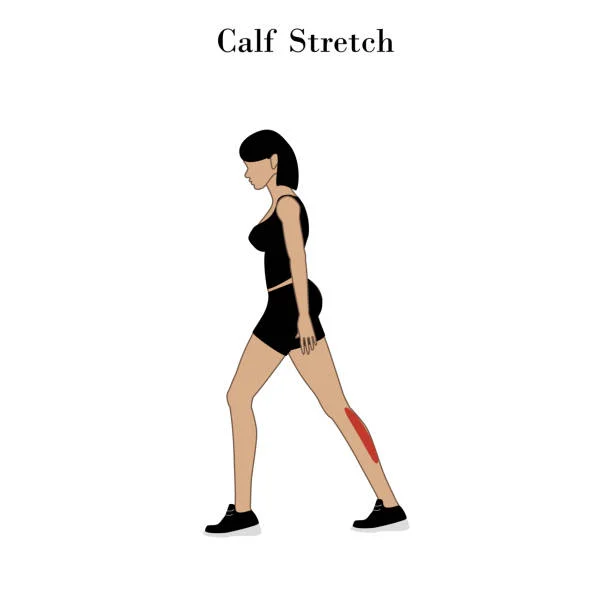
Heel cord stretch with bent knee
- This stretch needs the use of a wall.
- How to stretch a calf: Stand with the left leg in front of the right leg.
- Lightly flex the back (right) knee and slightly point the toes inward. compress both hands against the wall.
- Keeping both heels flat on the floor, compress the hips toward the wall.
- Hold this calf stretch for 30 seconds.
- Perform the stretch on the opposite side.
- When doing this stretch, try to maintain the hips centered over both feet and prevent leaning to one side.

Towel Stretch
- This stretch needs a hand towel.
- How to stretch a calf: Sit on the ground with both legs straight out in front.
- Wrap the hand towel around the ball of the right foot. grab both ends of the towel.
- Keeping the legs extended, pull the towel toward your body, and hold the towel stretch for 15-30 seconds. Then, relax for 15 – 30 seconds.
- Perform the stretch 3 times, then perform the same on the other side.
- Your back should be straight for the duration of the stretch.

Dorsiflexion Stretch
- How to stretch a calf: Sit on the ground with legs straight out in front.
- Attach the elastic band tightly around a sturdy piece of furniture, such as a heavy chair or table. Loop the opposite end of the band around the foot.
- Move the toes toward the body, then slowly return them to the beginning position.
- Repeat the motion 10 times, then change to the opposite side.
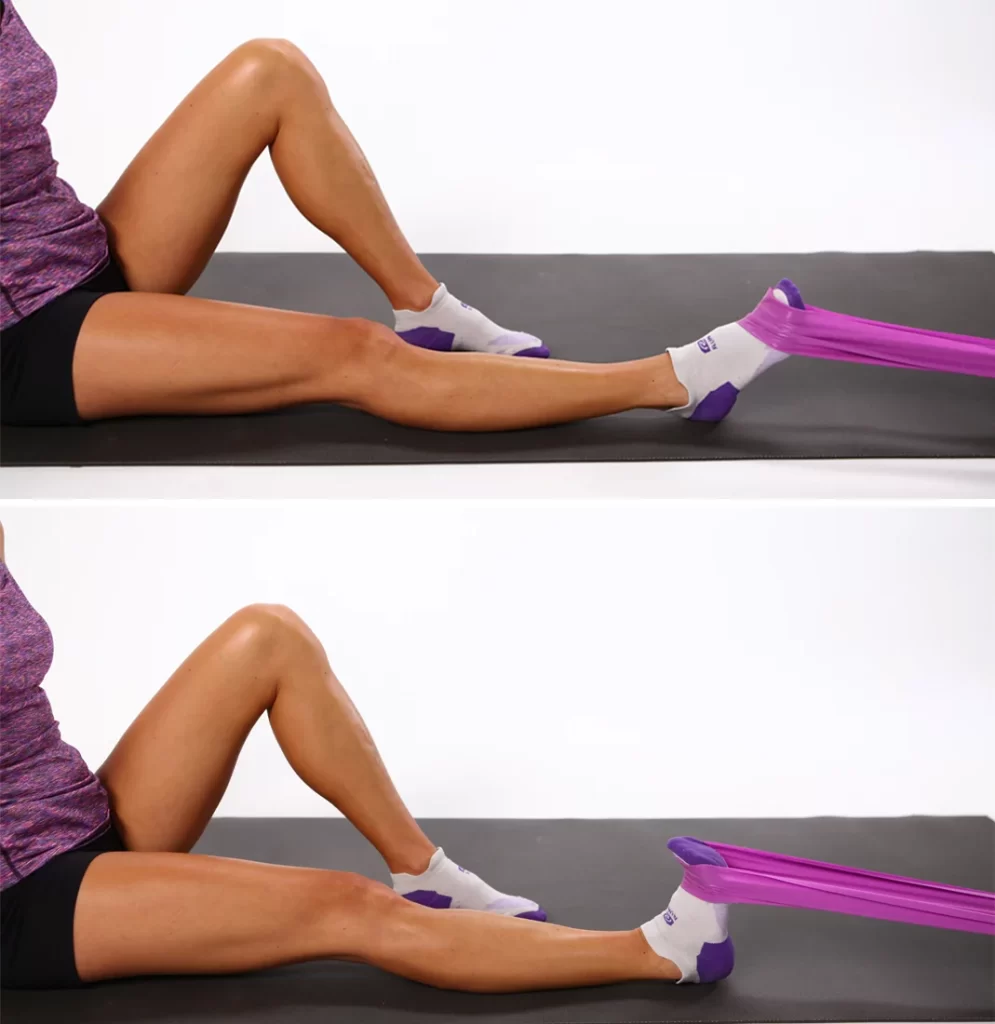
Downward Facing Dog
- How to stretch a calf: Start in all four limb positions with your wrists directly under your shoulders and your knees under your hips.
- Then, as you push your hands into the ground, draw your head between your elbows and walk your butt into the air.
- Drive your heels towards the ground. Hold this calf stretch for 30 – 60 seconds, peddling the feet turn by turn.

Heel Drop Stretch
- How to stretch a calf: Take the yoga block, and find some elevated surface.
- Step both feet up and place your feet so that your left heel is over the edge.
- Drop most of your weight into that left heel as it drops toward the floor.
- Hold this heel drop stretch for 30 seconds to a minute, then switch sides.
- To stretch other angles of your calf, this stretch with the stretching leg slightly bent.
- The heel drop can also be a good dynamic stretch to do during your warm-up and to test your range of motion. Begin with the same setup but rather have both of your heels over the edge. Drop your heels toward the ground, then press through the balls of your feet as you lift the heels. Repeat for 10-12 reps.
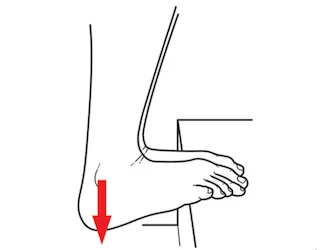
Lunging Calf Stretch
- How to stretch a calf: Stand facing some feet away from a wall. If you’re not close to a wall, you can also just perform this with your hands on your hips.
- Put your hands on the wall for support and step one foot behind into a mini lunge, flexing your front leg and keeping your back leg extended.
- Incline into the wall and press your back heel down so it’s flat on the floor. The far apart your feet are, the deeper the stretch will be.
- Hold this lunges stretch for 30 seconds. and perform
- it is on another side.
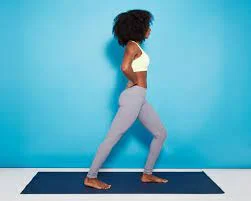
Standing Bent-Over Calf Stretch
- How to stretch a calf: Stand with one foot behind your other.
- Flex your back knee and keep your front knee extended as you fold forward and grasp onto your front foot underneath your toes.
- Pull up slowly on your toes, feeling the stretch in the calf.
- Repeat on the other side.
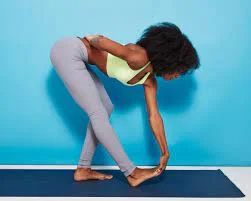
Runner’s Stretch
- How to stretch a calf: Face a wall and take a standing position 12 inches away from it.
- Straight your one leg behind you, keeping both feet flat on the ground and your rear knee extended.
- Incline toward the wall until you feel the tension in the calf muscle of the straight leg. (You have put your both arms on the wall for balance.)
- Hold the runner’s stretch for around 30 seconds.
- Perform with the other leg.
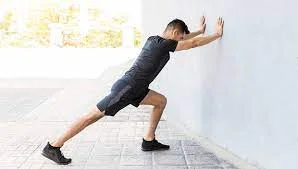
Seated Calf Stretch
- How to stretch a calf: Sit on the ground with your legs extended in front of you.
- Lean forward and grasp the arches of your feet.
- Pull your toes toward the body till you feel a stretch in your calf muscles.
- Hold the calf stretch for up to 30 seconds.

Calf Stretches on a step
- How to stretch a calf: Stand tall on a step with the heel of the right leg to be stretched resting off the back of the step.
- Drop the heel down by slightly flexing the other knee until you feel a stretch in your calf.
- Hold this calf stretch for 30 seconds and do it 2- 3 times
- To stretch gastrocnemius, keep the knee extended throughout the stretching.
- To stretch the soleus, flex the back knee slightly during the calf stretching.
- If you are performing the exercises on the stairs, you can achieve more of a stretch if you place your other foot on a higher step
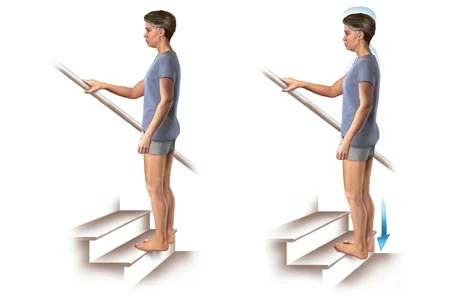
Isometric Calf Raise
- How to stretch a calf: Start standing up straight with a chair about hip height in front of you, you should put both hands on the back of the chair with your feet around shoulder-width apart.
- After grabbing the back of your chair, slowly lift both of your heels off the floor.
- You should be on the heels of your feet and this is where the raise should be coming from.
- Don’t put too much weight on your arms and maintain the position for the duration of time.
- Hold this isometric stretch for 30 seconds.
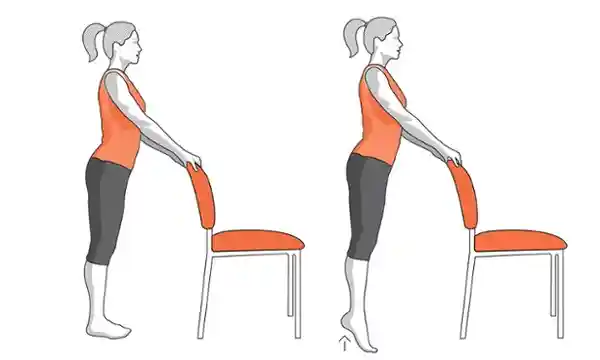
Calf raises
- This needs a tabletop or chair for support.
- How to stretch a calf: Stand with the same body weight on each foot. grab onto a tabletop or the back of a chair for support.
- Bend the left knee and lift the left foot. The right foot should take all of the body’s weight.
- Keeping the right leg straight, raise the right heel as high as possible. Lower it, and repeat this motion 8-10 times.
- Switch to the opposite side.
Inner Calf Stretch
- How to stretch a calf: Stand leaning on a wall with the leg extended back behind you.
- Laterally rotate the leg at the hip and then incline forwards until you feel a stretch in the calf, mainly on the inner side.
- Hold this calf stretch for 30 seconds and repeat 2-3 times.
Stretching the calves with a folding chair
- How to stretch a calf: Put your folding chair upside down on your mat so that the underside and legs of the chair face you and the seat face the ground.
- If the bucket/underside is slippery, put another mat there or fold your mat to cover it. If you select the second option, make sure the whole chair is still on the mat.
- Hinge at your hips to put your hands on the upper legs of the chair as you put one foot and then the other against the bucket of the seat.
- Compress your heels down toward it. (They may not touch fully, but if your heels don’t touch partially, perform one foot at a time or skip this one, as it may be acute for your ankles.)
Variation with one foot on the chair
- As you breathe in lengthen your spine, and as you breathe out fold a bit deeper at the hips and flex your elbows for comfort. Hold here for 15-30 seconds. Then, if you select to go deeper, walk your hands lower the legs of the chair.
- Continue to walk your hands lower the chair legs, pausing, breathing, and repeating till you have not reached your edge. When you’ve gone far you can sustainably hold, pause there for up to 2-3 minutes.
- To return from the stretch, move your hands back up the chair legs. Gently step away from the chair one foot at a time and come to stand in half standing forward fold. Then gently come up and stand in mountain pose for a minute or longer to notice the connection between your feet and the ground. observe whether you feel a newfound sense of ease and steadiness while standing.
What are the common mistakes to avoid during calf stretches?
- There are some mistakes you should avoid while stretching your calf:
- Back to the ground right away: The putting down of the legs should be slow and controlled for the effectiveness to be felt.
- Giving pressure on the arms: There are so many stretches for calf muscles so avoid pressing from the arms as this will give unnecessary strain on your upper body with no benefit.
- Not Keeping Your Back extended: Try to keep an extended back and not be slumped forward. Use a longer towel, strap, or belt so you don’t have to flex forward to do the stretch in a long sitting position.
- Cold Muscle Stretching: If you are performing this stretch in the morning for plantar fasciitis, you might perform it before you get out of bed to loosen up before standing on the affected foot. But for other utilizations, it is best to warm up your calf muscles with some walking and other exercises before stretching.
- Never bounce during calf stretch, it causes injuries to your muscle.
What are the safety and precautions measures during calf stretch?
- There are some safety matters you need to follow :
- If you have any prior injury or chronic pain in your legs, back, or hips, consult with your doctor or physical therapist before starting any exercise program. After an injury, you should not do stretching until you can push your toes down against the ground without feeling pain.
- While stretching, you have to feel the tension in your muscles, but you do not feel any pain. If you feel pain, stop the stretch.
- After an injury, you should not do stretching until you can push your toes down against the ground without feeling pain.
- Don’t perform when you have ankle and foot injuries.
Calf muscle exercise at home
Following list of exercises for the Calf muscle, we can do at home
- Seated Calf Raise
- Standing calf raise
- Elevated standing calf raise
- Isometric calf raise
- Single leg calf raise
- Jumping jacks
- Hole calf raise
- Raised heel squat
- Calf muscle stretch with or without a wall
- Heel cord stretch with bent knee
- Towel Stretch
- Calf raises
- Dorsiflexion Stretch
- Downward Facing Dog
- Heel Drop Stretch
- Lunging Calf Stretch
- Standing Bent-Over Calf Stretch
- Runner’s Stretch
- Seated Calf Stretch
- Calf Stretches on a step
- Inner Calf Stretch
- Isometric Calf Raise
- Stretching the calves with a folding chair
Bodybuilding of the calf muscle
Standing Calf Raises
Stand up straight, then push through the balls of the feet and raise your heel until you are standing on your toes, then slowly lower back to the starting position. For this reason, calf raises are just the easiest exercise to slip into your day-to-day life.

Smith machine reverse calf raises
Smith machine reverse calf raises will add muscle to your tibialis and help to prevent injuries. If you want to build a proportional lower body, then reverse calf raises exercise should always be a part of your leg workout on the Smith machine.

Standing barbell calf raise
Standing calf raises exercise activates the two muscles that run down the back of the lower leg: the gastrocnemius and the soleus. These muscles are integral in ankle dorsiflexion and plantar flexion propelling running and jumping.
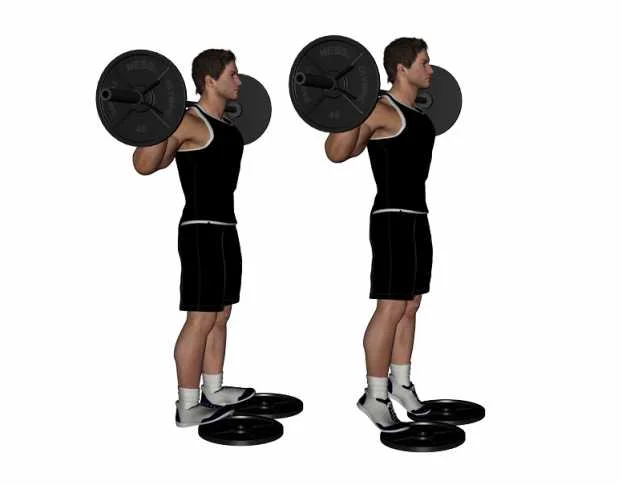
Standing dumbbell calf raise
The calf raise is an exercise you can do with dumbbells to work on the calf muscles. The calf muscles are situated in the back of the lower legs. Strengthening your calf muscles with the calf raise exercise will help protect your Achilles tendon and calf muscle from injury.
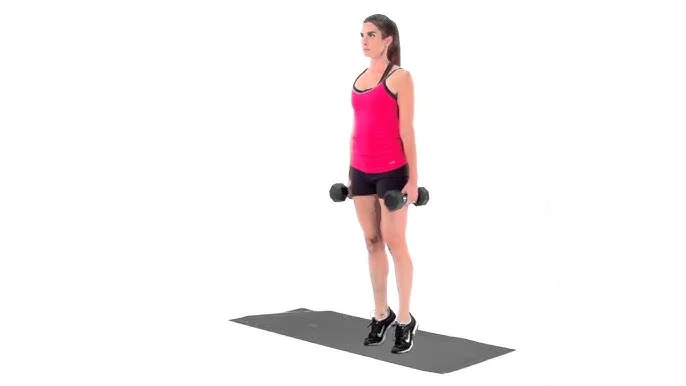
FAQ
Walking, Running, and hiking are excellent calf muscle strengthening exercises, especially when you go uphill. The steeper the climb, the more your calf muscle have to work. Running sports like basketball, soccer, and tennis demand that you run, jump, and push off your calf muscles to accelerate or change direction quickly.
To build your calves muscle you can do different type of exercise like Seated Calf Raise, Standing calf raises, Elevated standing calf raise, Isometric calf raise, Single leg calf raises, Jumping jacks, Hole calf raise, and Raised heel squat.
Calf raises: Squeezing your calf muscles, slowly raising your body, lifting your heels until you’re on your toes. Make sure to stand tall and straight, and then lower your heels back to the ground with control. and then Repeat for the desired repetitions.
Take the humble calf raise. It’s a simple movement and one that can be done just about anywhere. It’s easy enough to do every day, and as fitness YouTuber pigmies recently demonstrated, doing it daily for just a week can show results.

